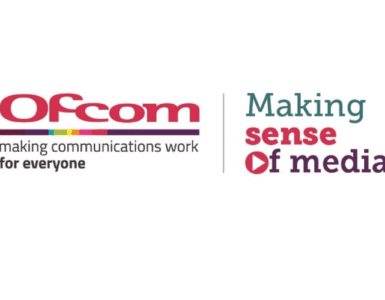by Tessa Jolls, President and CEO, Center for Media Literacy, USA.
The results of a new Fulbright-NATO Security Studies Award are now available through a just-released report, “Building Resiliency: Media Literacy as a Strategic Defense Strategy for the Transatlantic,” by the Center for Media Literacy’s President, Tessa Jolls. This ground- breaking report highlights aspects of the current information ecosystem and the state of media literacy in NATO countries.
“With media literacy becoming more urgent due to a fraught information environment marked by disinformation and misinformation,” Jolls said, “I set out to provide a snapshot of current media literacy practices and programs, and to give a context for media literacy education within strategic defense.”
Funded by a partnership between the NATO Public Diplomacy Division and the Fulbright Commission in Brussels, this unique award invites American academics and professionals to conduct a research or professional project that fosters awareness and understanding of the North Atlantic Treaty Organization (NATO). Jolls fulfilled her assignment in Brussels in 2021 through her host university, UCLouvain, where she served as a Visiting Scholar. She interviewed more than 60 policy makers, media executives and journalists, media literacy researchers and practitioners, and educators throughout NATO countries, and conducted a small 2022 survey of practitioners to identify major media literacy conferences, organizations, and programs.
Highlights of the report include:
- Factors animating the growth of media literacy, with a focus on human agency and new technologies such as natural language processing, disinformation and misinformation, culture and identity, and education needs.
- How resiliency can be attained, with citizens as a first line of defense in understanding how information can be weaponized and misused, and how using media and information are essential in addressing the crises of the times, whether that comes from pandemics, financial meltdowns, or natural disasters.
- Media literacy philosophies and practices, and how media literacy might become part of the cultural fabric of every member State. Media literacy tools as well as barriers to media literacy education are discussed, along with the need for solid research and evaluation.
- Recommendations, which address systemic needs, so that media literacy may be spread, institutionalized and sustained. Chief among recommendations is that educational systems seriously and systemically address media literacy as a core of curriculum, so that citizens have the needed process skills to access, analyze, evaluate, create and participate with media in all its forms.
“It’s not enough to acknowledge that media literacy is important,” Jolls said. “Commitment and sustained effort are urgent priorities in today’s media-driven culture, to assure that all citizens are equipped to help make wise choices possible.”
The challenges to achieving this vision are significant, but doable if societies have the will and commitment. Among the challenges to be met are:
- Educators learning to integrate media literacy throughout curriculum. This is no easy task, since education is currently driven by imparting content knowledge, rather than a focus on teaching process skills. Entire education systems need to be re-thought, with preservice training, professional development, compensation and reward systems, curricula, and assessment and evaluation all taking media literacy into account.
Since classroom time is always a factor in introducing any new content or process, this re-thinking of education offerings must address priorities, because it is impossible to teach all the content available: what do all students/citizens need to know? What do some students/citizens want or need to know? What should be eliminated? How should schools be organized? Who should be responsible? Only educators? Or partnerships with libraries or private industry or other stakeholders?
We must ensure that citizens are discerning consumers and responsible producers of information, prepared for lifelong learning. This is a multi-year, politically-fraught endeavor that, understandably, people have feared to enter.
- Curriculum developers finding efficient and effective ways to utilize technology and distance learning, along with media literacy. The results of the COVID online learning experiences from around the world are now known, and the picture is discouraging. (Chapman and Belkin, 2022) Yet, due to teacher shortages and lack of access to excellent instruction, it is imperative that educators have evidence-based solutions for delivering curricula online that is engaging and effective. This is one of the major challenges of our time. And in the meanwhile, there is no substitute for prepared and competent teachers.
- Models for these new education imperatives must be replicable, measurable and scalable, so that the best results are fostered and utilized. Research and development are needed, inside and outside the classroom. With a global focus, there are many examples and cases to sift through, and disciplines such as implementation science can play a major role in identifying the promising theories and practices that apply to all human learning.
- Comparative measures between countries are useful for evaluation and also for identifying best practices. The PISA test has identified countries excelling, according to the test measures, but these measures should be broadened to include other forms of assessment of different types of skills, namely process skills: the abilities to access, analyze, evaluate, and create media and information.
Today, the challenges are immense, but the needs for now and the future are even greater. The time is now!
Note The “Building Resiliency: Media Literacy as a Strategic Defense Strategy for the Transatlantic” Report is available for free download here.

Author
Tessa Jolls, President and CEO, Center for Media Literacy, USA














